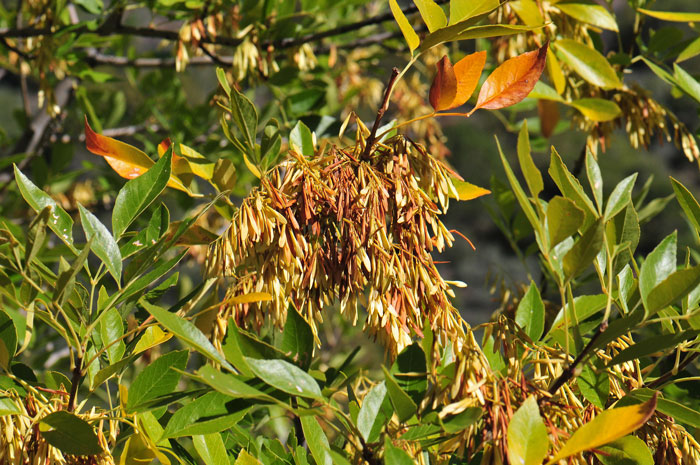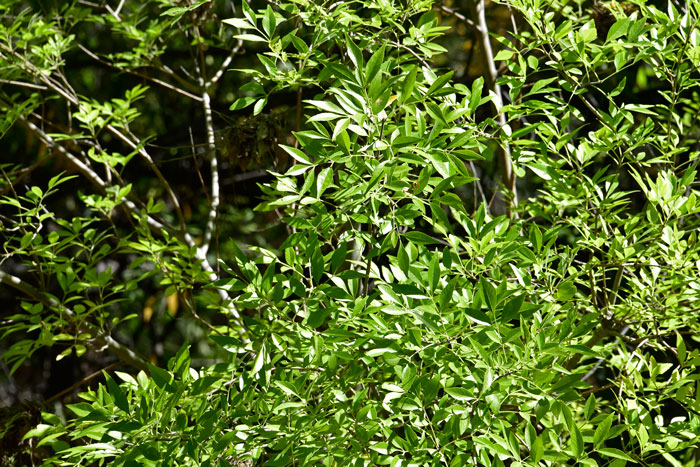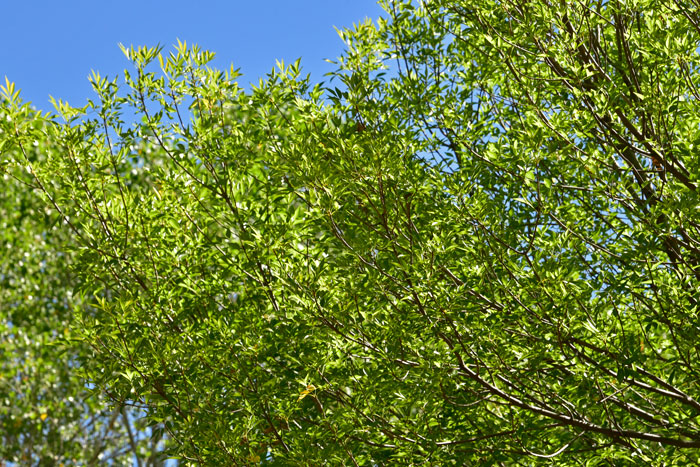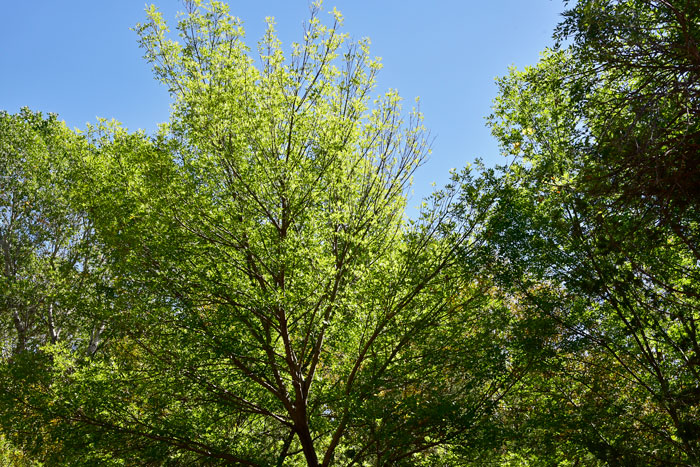Fraxinus velutina, Velvet Ash




Scientific Name: Fraxinus velutina
Common Name: Velvet Ash
Also Called: Arizona Ash, Desert Ash, Leatherleaf Ash, Modesto Ash, Smooth Ash, Standley Ash, Toumey Ash; (Spanish: Fresno)
Family: Oleaceae, Olive Family
Synonyms: (Fraxinus pennsylvanica subsp. velutina, Fraxinus velutina var. coriacea, Fraxinus velutina var. glabra, Fraxinus velutina var. toumeyi)
Status: Native
Duration: Perennial
Size: Up to 30 to 50 feet, usually much shorter, about 10 inches in diameter, medium to large size tree.
Growth Form: Tree; much variation, trunk gray-brown or medium-gray, fissured, new stem growth bright green and velvety, fast growing.
Leaves: Green, dark shiny green; old leaves deciduous before flowers appear, leaves up to 9 inches or so, pinnately compound, leaflets 3 to 5 or more, ovate to lanceolate, margins serrate, flaming yellow and gold colors in fall.
Flower Color: Green; inconspicuous, in small clusters, male and female flowers on separate trees, (dioecious), fruit a winged achene or samara with apical wing about a 1⁄3 inch wide.
Flowering Season: March to May.
Elevation: 2,000 to 7,000 feet.
Habitat Preferences: Canyons and streams with perennial water and woodlands.
Recorded Range: Velvet Ash is a riparian tree in the southwestern United States in AZ CA, NM, NV, TX, UT. It is also native to Baja California and northern Mexico.
North America & US County Distribution Map for Fraxinus velutina.
U.S. Weed Information: No information available.
Invasive/Noxious Weed Information: No information available.
USDA Wetland Indicator: In North America species has the following wetland designations;
Arid West, FAC;
Great Plains, FAC;
Western Mountains, Valleys, and Coast, FAC.
FAC = Facultative, occurs in wetlands and non-wetlands.
Threatened/Endangered Information: No information available.
Genus Information: 22 species in Fraxinus across the United States and Canada. 7 species in Arizona, 5 species in California, 6 species in New Mexico and 9 species in Texas.
The Plant List includes 456 scientific plant names of species rank for the genus Fraxinus. Of these 63 are accepted species names.
Comments: Velvet Ash is a handsome rounded-over tree, almost stately in profile, that is found in lower-desert or mid-elevation riparian habitats. Velvet Ash is a common desert landscape tree readily available at southwest nurseries under cultivars including the popular "Modesto Ash". Although the cultivars are extremely variable in size and shape resulting in some specimens look much "better" than others.
Velvet Ash is or was used for making walking sticks, tools and hunting and fishing items (Hualapai). See ethno-botanical uses at Native American Ethnobotany, University of Michigan, Dearborn.

